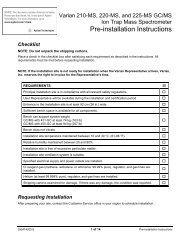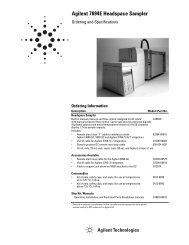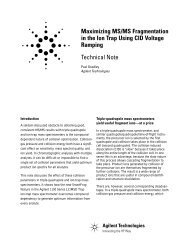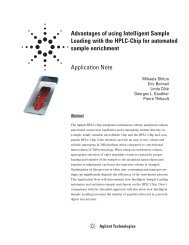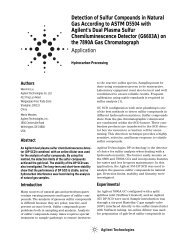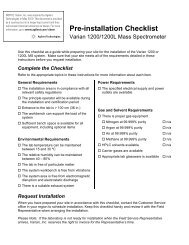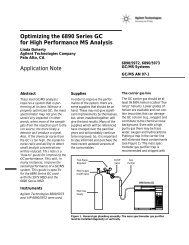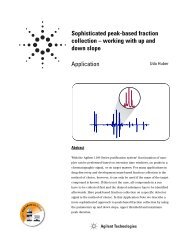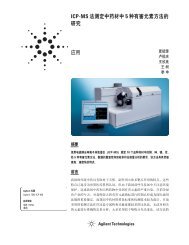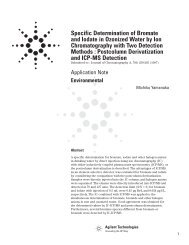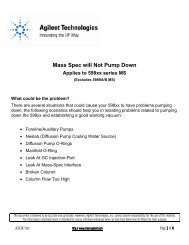Microplate Barcode Labeler User Guide - Agilent Technologies
Microplate Barcode Labeler User Guide - Agilent Technologies
Microplate Barcode Labeler User Guide - Agilent Technologies
Create successful ePaper yourself
Turn your PDF publications into a flip-book with our unique Google optimized e-Paper software.
114<br />
Chapter 6: Running a print job<br />
VCode <strong>User</strong> <strong>Guide</strong><br />
About data sources<br />
Introduction<br />
This topic defines a data source, describes the advantages of using a<br />
data source, lists the available types, and discusses a limitation to their<br />
use.<br />
Data source defined<br />
A data source is any external file from which PlateTag can import the<br />
field data that governs the text and bar codes to print on a bar code<br />
label, as well as the label format and drop stage setting.<br />
Data source use<br />
The use of a data source is optional. You can instead define the data to<br />
print on a bar code using counters, constants, and clones. Either way,<br />
you set the source of the bar code data when creating a schema.<br />
Some advantages of using a data source are that:<br />
❑ They can be stored permanently in a format that is easily edited<br />
❑ They can use values that have no sequence pattern<br />
❑ They are easily re-used or modified<br />
❑ Can be automatically generated by a LIMS (Lab Information<br />
Management System)<br />
Before creating a<br />
data source<br />
You reference a data source in PlateTag at the time you create a schema.<br />
You must create the data source before the schema, but it will help you<br />
to understand data source creation if you already understand schemas.<br />
For this reason, we recommend that you review the information about<br />
schemas in this guide about before you create a data source.<br />
Types of data source<br />
PlateTag can read data from:<br />
❑ Comma-separated value files (CSV).<br />
❑ Tab-separated text files (TXT).<br />
❑ Excel files.<br />
Note: The file must be created using Excel 2002. You cannot<br />
create the file with a later version and then save it as an<br />
Excel 2002 format, because the original and converted formats<br />
are not identical.<br />
❑ Online databases using Open Database Connectivity (ODBC).<br />
Note: Setting up an online database is a specialized procedure<br />
that is not covered in this version of the VCode <strong>User</strong> Manual. For<br />
information about using PlateTag with an online database, please<br />
call the Velocity11 Service Center.



